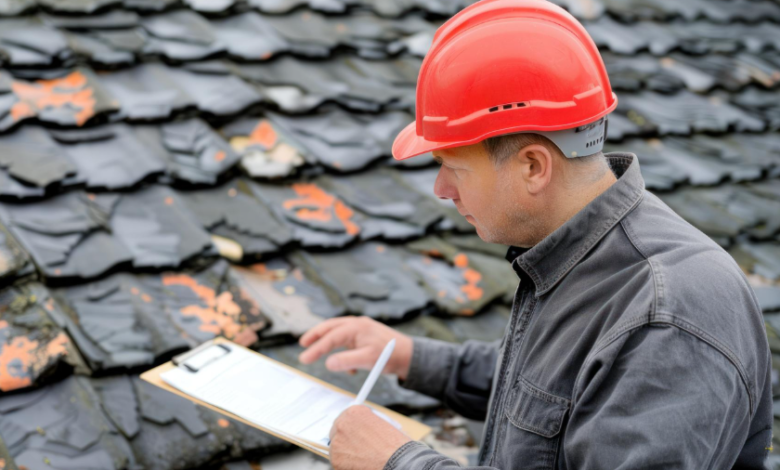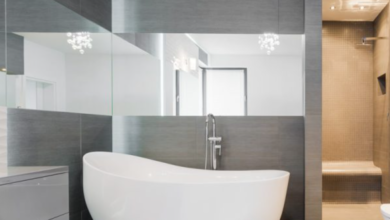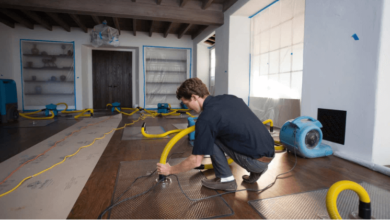How to Spot Roof Damage Early and Avoid Expensive Repairs

Roof repair Calgary offers quick, dependable solutions for leaks, wind damage, ice damming, and hail damage on homes and structures in the Calgary area. Sudden chinook shifts and deep snow place stress on shingles, vents, and flat roof membranes.
A repair done in a timely fashion will prevent rot, mold, and heat loss and will keep insurance claims straightforward. At Superior Roofing Ltd., we troubleshoot with transparent images, provide reasonable estimates, and employ experienced teams well-acquainted with Calgary’s weather conditions.
Depend on homegrown service, rugged craftsmanship, and winter-proven parts!
Your Roof Inspection Checklist
Your Roof Inspection Checklist – Let this Calgary-centric checklist help you identify problems quickly, minimize repair expenses, and maximize your roof’s life through our freeze-thaw cycles, chinooks, hail, and high UV exposure at altitude. Check annually and after wind, hail, or heavy snow.
Inspect the attic and ceilings for water stains or dampness, which may indicate the presence of hidden leaks.
Check ceilings and upper walls for yellow-brown rings, peeling paint, or bubbled drywall. In the attic, look for dark sheathing, wet insulation, frosted nails, and a musty odour that often follows cold snaps.
Poke the decking lightly; soft areas warn of rot. Verify insulation depth and even coverage, the vapour barrier’s seal around light fixtures, and unobstructed airflow at soffit and ridge vents. Poor ventilation traps moisture and heat, which can drive ice dams and lead to premature shingle failure.
Watch for daylight at roof penetrations; tiny gaps become leaks after hail.
Inspect flashing around chimneys, vents, and skylights for rust, gaps, or deterioration.
Inspect step flashing at sidewalls, counter-flashing at chimneys, and boots at plumbing stacks. Inspect the roof for any raised edges, missing sealant, cracked rubber, corrosion, or debris caught behind metal.
On skylights, check gaskets and weep channels. Blocked weeps lead to interior fogging and leaks. After windstorms, fasteners can back out and cause capillary paths.
Re-seal with exterior-grade sealant rated for Calgary’s temperature swings or replace components that have failed. Sound flashing is your first line of defence against driven rain and meltwater.
Look for granule loss in gutters and downspouts as a sign of aging asphalt shingles.
Examine eavestroughs and ground by downspouts for piles of black or colored grit. Heavy granules indicate UV-worn shingles that are nearing the end of their lifespan, and hail tends to accelerate this process.
Once there, check to ensure that the gutters are pitched towards the downspouts, the seams are tight, and the straps are secure. Your Roof Inspection Checklist: Downspouts should discharge a minimum of 1.8 m from the foundation to prevent ice buildup and interior leaks.
Map granule loss to roof slopes. South- and west-facing planes age faster under the Calgary sun.
Calgary’s Weather Effect
Calgary’s rapid weather changes accelerate shingle deterioration more than almost any other city in Canada. Thermal shock, which involves hot sun followed by sudden cold, stresses materials and seals. The result is increased yearly maintenance, a reduced lifespan, and additional stress for owners.
Freeze-thaw cycles
Moisture leaks under tabs, freezes and expands gaps. Asphalt shingles eventually crack, curl, and loosen around nails and flashings. Look for step cracks along ridge lines and at eaves. Ice dams develop when daytime melt refreezes at cold eaves, forcing water to rise under shingles and into the deck.
Inspect valleys, skylight curbs, and north-facing slopes after cold snaps. A twice-yearly roof check, plus after storms, catches early lift or split seals.
High winds
High winds can lift edges and tear full shingle courses, exposing underlayment and the wood deck. As soon as the seal strip breaks, the gusts unzip and peel. Check for absent tabs, bent shingles, and lifted ridge caps.
Tie off repairs with high-wind nailing patterns and cap-grade sealants. Additionally, secure the eave and rake edges that are most susceptible to wind pressure.
Heavy snow loads
Wet snow is heavy and holds meltwater against penetrations. Rafters and trusses can flex, opening joints and resulting in slow leaks at vents and chimneys. Provide clear drift zones behind dormers and along parapets on low-slope roofs.
Include adequate attic insulation and balanced venting to minimize ice dam cycles. Sagged gutters that allow water to flow back under the first course can exacerbate these issues.
Hailstorms
Hail is Calgary’s top risk. The 2024 Calgary weather event resulted in approximately $3 billion in insured losses and over 130,000 claims. Hail dents, bruises, and puncture surfaces, accelerating granule loss and UV decay.
Asphalt shingles that can survive 15 to 25 years in gentler climates tend to wear out faster in this region. Post-hail, record dents on aluminum, asphalt shingle bruises, and policy fine print mean that repeated catastrophes consume claims and increase premiums.
Impact-rated products and full-coverage underlayment mitigate future loss.
See also: Home Water Damage: Prevention and Restoration Tips
After The Storm
Calgary storms are fast-moving, with hail dropping and then clearing up to leave sunny skies again. Damage is deceptively difficult to spot initially. Fast inspections and reliable follow-up contain expenses and safeguard your property.
- Check for fresh leaks or water stains on ceilings and walls.
- Shoot roof, siding, eavestroughs, downspouts, and skylights from the ground.
- Note hail size, wind direction, and time of day.
- Call your insurer to verify hail coverage and claim procedures.
- Set a secure temporary tarp if water is leaking in.
- Book a professional roof inspection within 24–72 hours.
Hail in Calgary tends to scuff and strip granules from asphalt shingles, bruise the mat underneath, and crack ridge caps and plastic roof vents. You can notice shingle bald spots in your eavestrough, dings on metal flashings, or chipped siding on the west and north faces where storms pack the biggest punch.
Water damage is the second big risk after hail passes. Moisture that seeps below the shingle or membrane can remain for weeks and then manifest as bubbling paint, a musty odour, or dark seams in drywall. Left unchecked, it can nurture mould and decay on decking, rafters, and insulation. Even minor storms can initiate this track, so examine immediately and again following the next thaw or rain.
Photographing exposed problems assists with repair planning and supports a claim. While most Calgary policies include hail as part of standard property coverage, timelines are relevant. Clear, dated photos of dislodged granules, dented flashings, split ridge caps, or damaged vents help expedite adjuster reviews.
Some damage takes months to manifest, so plan a return inspection, particularly on aged roofs or flat downtown systems that pond. If water is coming in, get a real tarp fastened to the decking, not simply shingles, to halt further intrusion until repairs can be made.
Fast action is essential because once hail damage hits the underlayment and structure, it can grow quickly. Currently, as much as 40% of your insurance claims are directly tied to roof losses, and acting quickly can save money and prevent larger tear-offs down the road.
Best Materials For Calgary
Calgary’s wild weather, including hailstorms, heavy snow, and sharp Chinooks, demands roofs that withstand rapid freeze-thaw cycles, high winds, and heavy loads. Materials that are cold-climate rated and backed by proven warranties should be installed with good insulation to help curb ice dams and keep bills in check.
Cost and lifespan at a glance
- Asphalt shingles: Low upfront cost, common for homes, and last 15 to 25 years with routine care.
- Class 4 impact shingles have a higher cost than standard asphalt and provide better hail resistance. They last between 25 and 35 years.
- Euroshield (recycled rubber): Strong hail performance, mid-to-high price, and 50+ years.
- Metal (steel or aluminum): The highest upfront cost, but offers long-term value and lasts 40 to 70 years.
- SBS flat rubber (commercial/flat) has a moderate cost, is durable, and requires low upkeep, lasting 20 to 30 years or more.
What to look for in cold climates
Opt for shingles with SBS-modified asphalt or rubberized blends to remain flexible in deep freeze. Go for Class 4 impact ratings for hail. For metal, select thicker gauge panels with industry-leading paint systems and hidden fasteners.
For flat roofs, SBS membranes with appropriate insulation and vapour control are the best way to prevent blisters and leaks. Always put ice and water shield at eaves and valleys. Include balanced attic ventilation to reduce the risk of ice dams.
Warranties that matter in Calgary
Look for manufacturer warranties that specifically list wind, hail, and thermal shock coverage, not just defects or malfunctions. Ask for upgraded (“system”) warranties if installing matched underlay, vents, and accessories.
Verify that wind ratings are 177 km/h or greater, impact ratings are offered, and workmanship warranties from a Calgary-certified installer.
Repair Or Replace?
Calgary roofs endure hail, chinook swings and long freezes. The smart decision ultimately boils down to the age, condition, leak history, and budget of the roof. Strive to strike a balance between short-term spending and long-term risk and value.
Pros and cons at a glance
- Repair pros: lower cost, faster, less mess, targets leaks. Excellent if scratch or damage is minimal. Sometimes, same-week scheduling.
- Repair cons: may not fix hidden deck or ice-dam issues. Repeat call-outs stack up. Patchwork appearance to older shingles.
- Replacement pros include resetting service life, improving insulation and ventilation, boosting curb appeal and resale value, and reducing future maintenance costs.
- Replacement cons include higher upfront cost, longer lead time, and more disruption.
Cost and value in Calgary terms
Small roof repairs typically cost between $450 and $1,500 in Calgary. Any broader repairs or partial re-sheeting can also reach the thousands. Complete shingle replacement is highly variable, depending on factors such as slope, layers, access, and ventilation enhancements.
Although repair is usually cheaper and quicker, compare the three to five-year expenditure. If you’re fixing it every season, a new roof can be more economical over the course of ten to twenty years. Even if a repair only lasts ten years, most Calgary homes have appreciated enough in that timeframe to compensate for a subsequent full replacement in CAD.
Age, wear, and frequency of issues
If your roof tops 30 years and is looking rough—cupping shingles, extensive granule loss, soft spots—this is typically the first indication a replacement is due. If a roof has been well maintained but is older than 50 years, it’s probably safer to replace it than to repair it.
If you notice a problem that’s not extreme, you likely only need a repair: one torn shingle, a small flashing gap, or a single leak after wind. Track frequency: two or more leaks in 12 to 18 months signals declining system health.
An overlay can be fine if you weren’t going to replace it for another 10 years, as long as the structure, code, and weight limitations permit. It offers short-term savings but won’t solve underlying debt problems.
Navigating Local Codes
Calgary roof repair is required to adhere to the Alberta Building Code (ABC) and the City of Calgary bylaws. Code regulations address building, weather protection, fire safety, and energy. While your repair may be minor, inspectors can request that you provide evidence that materials and methods conform to code, so expect a day-one plan of compliance.
Review Calgary’s building codes for roofing to ensure your project meets legal requirements.
Begin with the ABC and the City’s existing roofing bulletins. Verify slope regulations for flat and low-slope roofs, drainage paths to scuppers or internal drains, edge metal specifications and fire ratings for membranes on commercial roofs. Check fastening patterns for shingles in high-wind zones common to Calgary, ice dam controls at eaves and snow load design.
Have manufacturer instructions on site. The City wants installs to match those specs, not just pass visual checks. Local codes are a nightmare to navigate. They take forever. Experience saves refork as well.
Obtain necessary permits before starting major roof repairs or replacements.
You typically require permits for complete tear-offs, structural deck repairs or significant membrane overlays. Residential roofing permits usually cost between $150 and $450, depending on the scope, and are updated annually. Verify the current schedule when you budget.
Simple home approvals can be obtained in a few days, while larger or mixed-use projects may take weeks. Inspections occur on business days, so have your permit number and address handy when booking. Proper permits are a small price to pay compared to fines or worse, having to tear off non-compliant work.
Follow rules on roofing materials, insulation, and ventilation specific to Calgary.
Choose materials that are rated for Calgary’s freeze-thaw cycles and wind. The ABC defines minimum R-values, which help determine the type and thickness of insulation to use on flat roofs. Check venting goals for attic systems to reduce ice dams and moisture at 3:33.
For torch-applied membranes, adhere to flame-safe methods and fire watch protocols.
Create a checklist of code compliance steps to avoid fines and delays.
- Confirm permit requirements, fees, and timelines.
- Document R-values, ventilation, and material fire/wind ratings.
- Record fastening, slope, and drainage details.
- Keep inspection proofs and photos tied to the permit number.
Conclusion
Roof repair in Calgary requires clear eyes and quick moves. Hail hits heavily, and chinooks whip temperatures like a dry paintbrush. Little leaks become huge quickly. A smart check, the right fix, and the right gear keep your place tight and dry. Our team understands the codes, the winds, and the neighbourhoods from Mahogany to Tuscany. Do you need a quick peek or a complete overhaul? Contact Superior Roofing for a straightforward quote and honest advice. Need to verify our licenses, safety record, and reviews? Trust credentials and see our About page.





